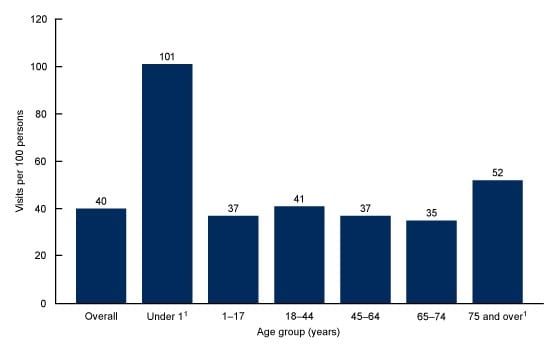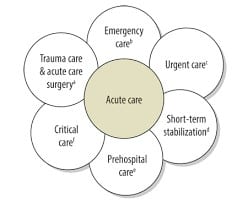Hospital-based emergency care is the only medical treatment to which Americans have a legal right, regardless of their ability to pay.
The Emergency Medical Treatment and Active Labor Act (EMTALA) was passed by Congress in 1986 and requires hospitals and ambulance service to provide care to anyone needing emergency healthcare treatment regardless of citizenship, legal status, or ability to pay. The legislation sets forth no provisions for reimbursement.
ER/ED kot cilj
New York State research data (2017-2018) records that over 4 million people make approximately 7 million visits yearly to hospital emergency departments (ED); however, they do not result in a hospital stay. A deep dive into the primary reason for these ED visits indicates that many could have been assisted in a different, less costly primary or preventive care setting. The absence of alternatives has led to US$8.3 billion in additional costs for the industry (Modernhealthcare.com). It has been found that 60 percent of the visits (4.3 million) centered on 6 chronic conditions: asthma, chronic obstructive pulmonary disease, diabetes, heart failure, hypertension, and behavioral health conditions such as mental health or substance abuse issues.
On a national level, 130 million people in the USA visited an ED facility with 35 million visits related to an injury. Of the emergency department visits, 16.2 million led to in-hospital admission with 2.3 million resulting in admission to critical care units. Of the patient visits, 43.5 percent were seen in less than 15 minutes with 12.4 percent resulting in hospital admission and only 2.3 percent ending in a transfer to a different (psychiatric or other) hospital (2018 NHAMCS Public Use File).

A 2018 research study found that the primary group visiting an ED are under the age of 1 year, with 52 percent aged 75+. The ED visit rate for females was 44 visits per 100 persons, higher than the rate for males (37 visits per 100 persons). In 2018, the ED visit rate for non-Hispanic black or African American persons was 87 visits per 100 persons, higher than rates for persons from all other race and ethnic groups. The ED visit rates for Hispanic or Latino persons (36 per 100 persons) and non-Hispanic white persons were 35 per 100 persons.
The ED visit rate was highest for patients with Medicaid (97 visits per 100 persons) with the lowest rate for patients with private insurance (23 visits per 100 persons) (National Center for Health Statistics, Division of Health Care Statistics).
Zastareli sistemi

Although most hospital types are affected, the crowding problem is particularly severe in urban and teaching hospitals. A 2010 survey by the American Hospital Association revealed that more than 50 percent of surveyed urban and teaching hospitals had EDs that were at or over capacity. Exacerbating the problem is the alarming trend of a decreasing number of EDs and an increasing number of ED visits.
Neželena srečanja
Although all EDs struggle with issues of overcrowding and stretched staff-to-patient ratios, under-funding, resource constraints in conjunction with inherently high-risk populations and high-risk diagnostic errors create an environment designed for disaster.
EDs are not the final destination for most patients but rather a pause on the way to another deposition (i.e., home, a specialized unit, inpatient bed) resulting in the availability of emergency beds often at the mercy of the limited resources of other hospital departments and other units of the health care system.






















